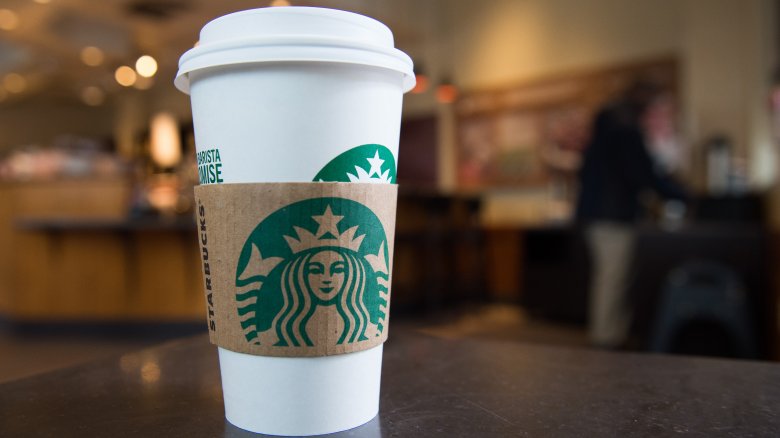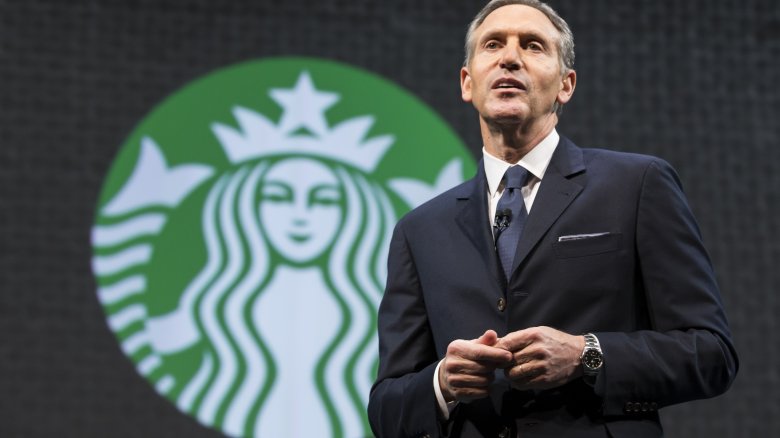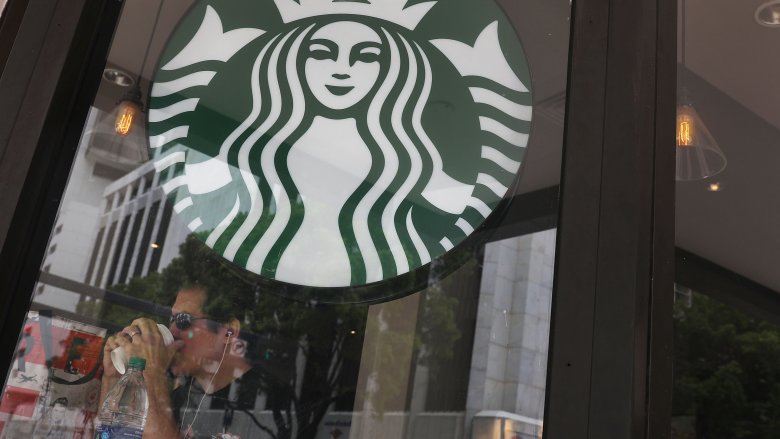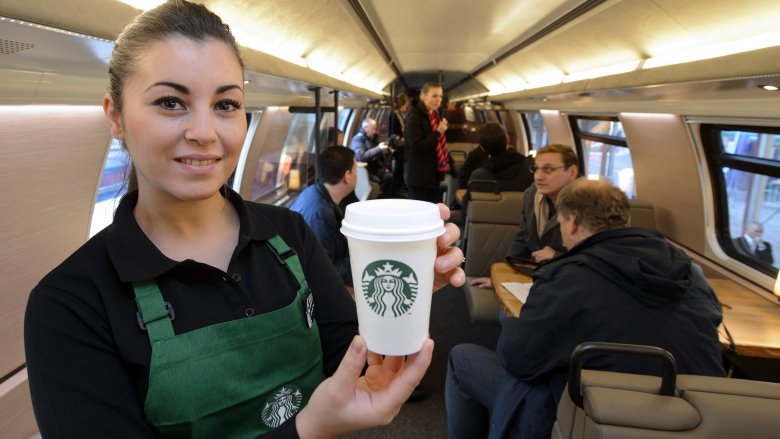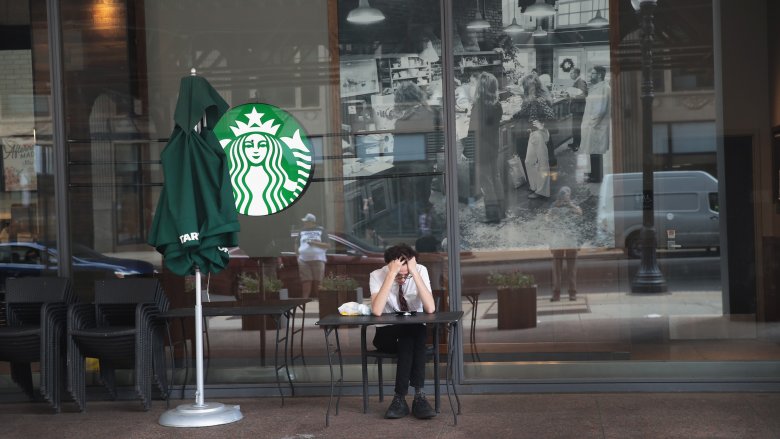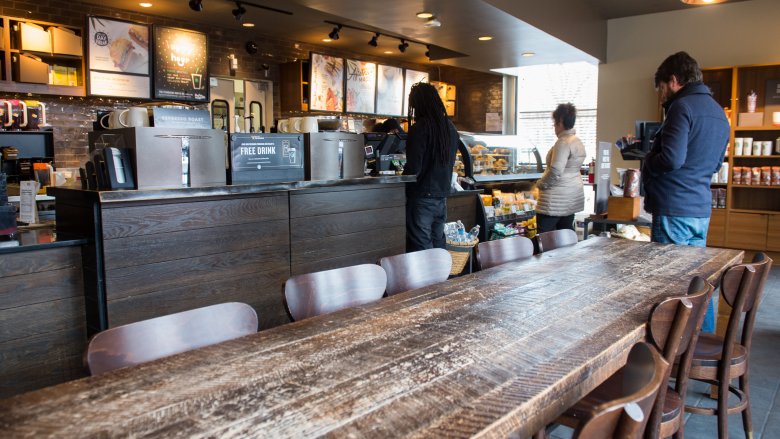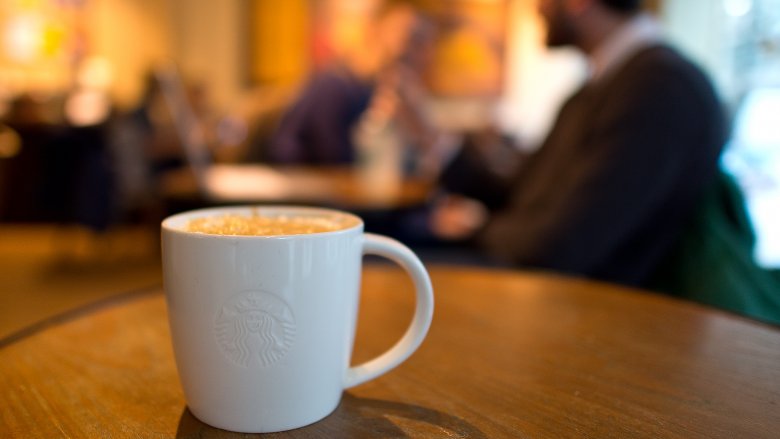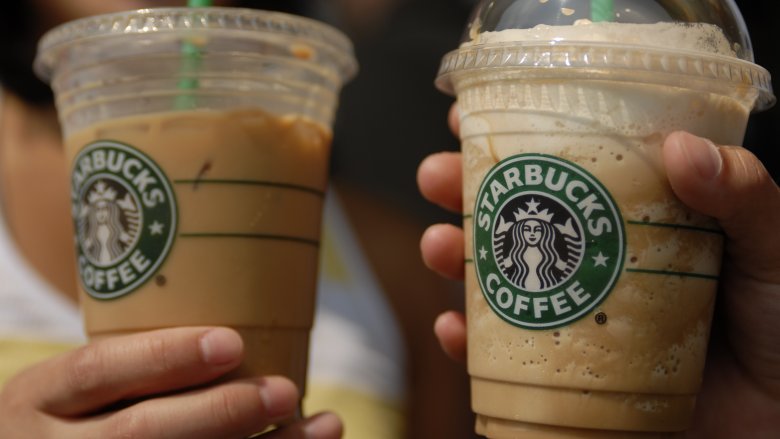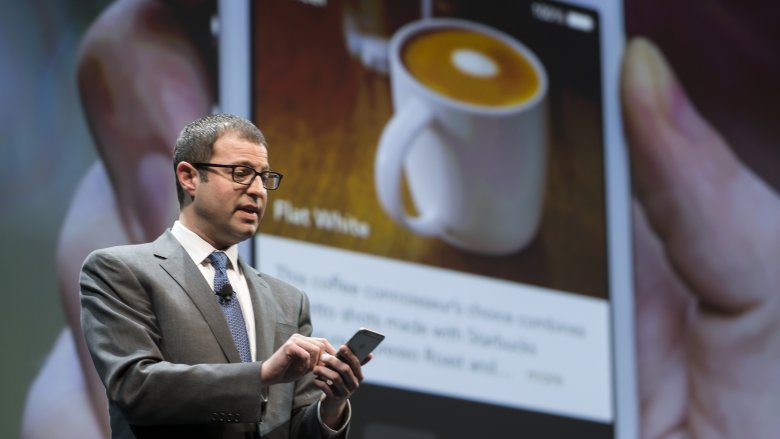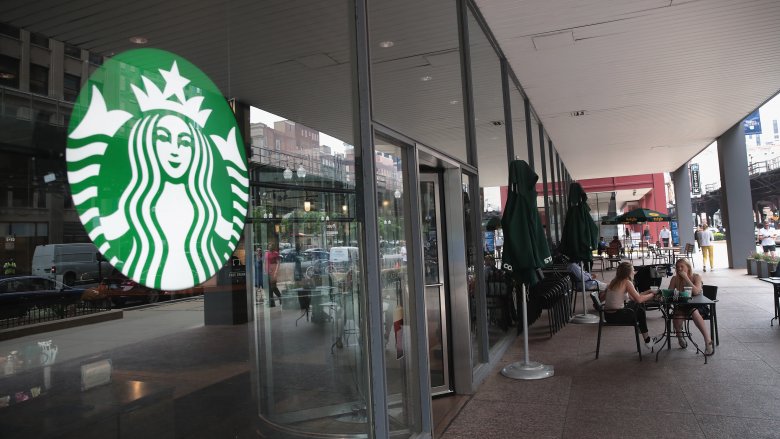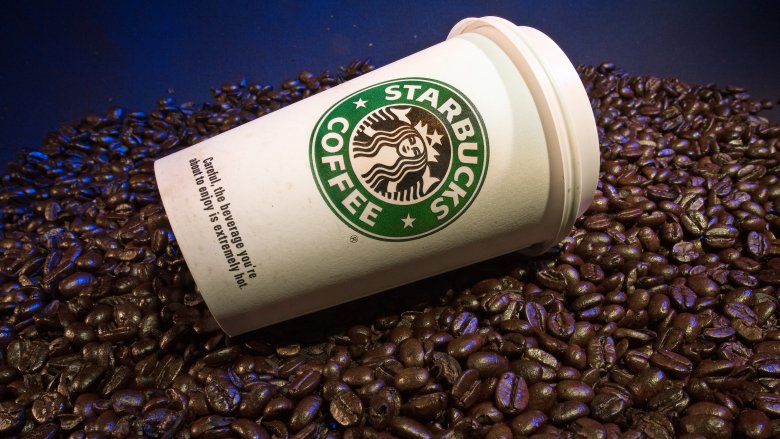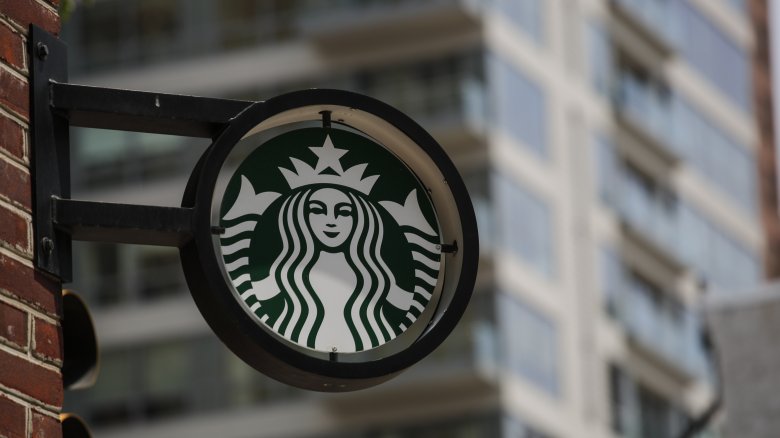The Real Reason Starbucks Is Closing 150 Stores
Once, Americana was a roadside diner with a checkerboard floor and red vinyl seats, a jukebox in the corner, and plates full of food that didn't even come with nutritional information. Today, traditional American sights are fast-casual restaurants, menu boards with calorie counts, and Starbucks.
Lots and lots of Starbucks.
They're everywhere, and it's really no surprise. Americans are drinking more coffee than ever, and in March 2018, Reuters reported coffee consumption was at a high. A study from the National Coffee Association found that 64 percent of adults had at least one cup of coffee a day, and that's a ton of coffee. It's on the rise even as more people turn away from less healthy options — like juice and soda — and tea drinking is on the rise, too. That seems like it makes it prime time for Starbucks to capitalize on a growing trend, but in June 2018 they announced they were going to be doing something they hadn't done in a long time: close a whole bunch of stores. What's going wrong?
They're giving it a simple spin
Starbucks' official press release is filled with all kinds of business and economics jargon, so it's easy to sort of glaze over if you try to read it. Let's break it down.
Financial growth is at the heart of the problem, and Starbucks — who has historically multiplied like very enthusiastic rabbits — is facing only a one percent growth forecast for the third quarter of 2018. That's definitely not what they want to hear.
The press release goes on about how they're going to fix that, and it involves working with the Global Coffee Alliance to strengthen the brand, becoming more focused on what customers actually want, and increasing profits in two of their biggest markets, the US and China.
Entrepreneur says there's a bit more to the problem than just a little bit of slow growth, adding the company has fallen short of growth expectations not just in this quarter, but in five of the last six quarters. They're basically saying Starbucks is closing stores because they're not seeing the growth they want to, but there are a whole bunch of really weird factors influencing this.
Are there just too many?
If you miss your turn into your local Starbucks, it's not a big deal, right? There's probably another one on your way to work, and if you're in a big city, they're all over the place. You're not imagining it — it's actually worse than you think. According to analyst Andrew Strelzik's research in late 2017 (via CNBC), every Starbucks has an average of 3.6 more Starbucks within a one-mile radius. That's an average across the entire country (it's worse in California and major cities), but that's still pretty insane.
And that's causing them a major problem: cannibalization (yep, it's really called that). It happens when different locations feed off the same customer base and ultimately end up hurting each other.
By February 2018, Wall Street was saying, "Enough is enough, Starbucks." Reuters says cannibalization was one of the things Starbucks said was definitely not dragging down their sales, but Wall Street analysts say it's at the very root of all their problems. They call it "excess unit growth," and say they're essentially shooting themselves in the foot by continuing to open more and more stores on top of each other.
They're too expensive
Times are tough for a lot of people, and even though those people still need their coffee, there's a good portion of the population that's just not down for spending $4 to $6 on their morning cup of joe. That can translate to $30 a week — at least — and that's enough for gas money.
According to Reuters, another big problem Starbucks is having is that they're pricing themselves out of the market. Their prices were already high and they've only been going up, and there's some debate here, too. Starbucks claims their prices have only gone up 1 to 2 percent, while their Rewards program allows customers to make up that difference. Wall Street analysts, on the other hand, say it's more like an average of 3.5 percent each year, and that's a pretty big jump.
Meanwhile, more affordable competitors like McDonald's are becoming serious threats in the coffee business. They're expanding their offerings, getting more serious about their coffee, and keeping their prices much, much lower. Add in the fact they're a one-stop shop for a quick breakfast as well as a decent cup of coffee, and they're definitely stealing a chunk of the coffee business.
Backlash over racial issues
Let's talk about the elephant in the room here: Starbucks' racial issues. There have been several incidents in Starbucks' recent history, all stemming from apparent racism. The most high-profile one happened on April 12, 2018, when Starbucks employees called the police on two men who asked to use the bathroom before making a purchase. Rashon Nelson and Donte Robinson were arrested, when they were just waiting for a business meeting to start.
Only a month later, Starbucks was apologizing again to a man who had ordered his drink and gotten it with a racial slur printed on the label (via USA Today). That particular incident happened just days before Starbucks closed 8,000 of their stores for racial-bias training, which Inc. points out was a questionable way to deal with the problem. What Starbucks didn't do, they say, was publicly fire employees involved in racial discrimination.
Racial training cost them millions
Just hearing about Starbucks and their problem with racism is enough to turn some people away from ever setting foot in the door again, and that's a problem they'll have to deal with for a long, long time. More immediate is the money they lost from their several hour, company-wide closure and training program for their 180,000 employees.
According to USA Today, Starbucks lost around $12 million on just that single day. That's not including the undisclosed amount they paid to the two men wrongfully arrested, and it's not the whole story, either.
According to QZ's estimates, the actual amount might have been closer to just around $4.4 million which, they stress, is only .02 percent of their annual sales total. Sure, that's not a huge percentage, but they also note that between the April 12 arrests and their May 29 reporting, boycotting and protests led to a $3 billion drop in Starbucks' net worth as a company. That's a big deal to anybody.
Delaying a new campaign
Marketing campaigns can make or break a business, and at the same time Starbucks struggled with slow growth and got wrapped up in some pretty toxic racism, they had been on the verge of launching a new marketing campaign.
Their "Afternoon Made" campaign stood to overhaul the way people look at coffee, encouraging customers to think of it not just as a morning necessity, but an afternoon pick-me-up. Adage says it included the introduction of coffee happy hours and discounts, and it had the potential to be a big deal. But in light of the racial incidents, Starbucks decided to delay the campaign.
According to CEO Kevin Johnson (via MarketWatch), "We didn't think it was appropriate to launch that campaign in the middle of dealing with the situation in Philadelphia and all that came with that." It's likely that delay could have some long-lasting impacts on the campaign's success, and Johnson added that it "stalled the momentum" of sales going into the summer months.
They're feeling pressure at the waistline
Coffee at Starbucks isn't just a caffeinated pick-me-up, it's a whole experience. Unfortunately, it's usually not a healthy experience, and Entrepreneur says that's just one more reason they've been seeing a slow, downward trend in growth that's now resulting in closing stores.
Data company Label Insight says that in 2018, around 67 percent of consumers opt for taking the food and drink choices that are healthier and more socially conscious. That includes low-sugar and sugar-free drinks... so let's talk about Starbucks.
When Insider looked at some of the least healthy drinks on the menu, they found some pretty shocking stuff. Just take the Caramel Frappuccino, with 420 calories, 66 grams of sugar, and 15 grams of fat. Or the Cinnamon Roll Frappuccino, with 510 calories, 85 grams of sugar, and 16 grams of fat. Yikes! Starbucks is adding more waistline-friendly options to their menu, but that's not what they're known for — and for a lot of potential customers, that's a deal-breaker.
Their app caused serious problems
The closures are coming at the end of a serious downward spiral, and part of the problem is something that was developed to try to make stopping at Starbucks easier: their app. The idea sounded great. Just order and pay from your phone, stop in, and your coffee is ready and waiting. Only, that didn't happen.
Business plummeted when customers were confronted with long lines created by a flood of online orders employees just couldn't keep up with. Walk-in customers left at the sight of the lines, and app customers stopped seeing the point in using it. According to Reuters, Starbucks went into damage control mode to try to fix the problems, and it wasn't a cheap fix.
Experts weighed in at CNBC on the things that needed to be done in order to make the app work like it was intended, instead of scaring away customers. That meant more staff (and an increase in wage costs), re-configuring stores to have separate sections for picking up app orders and in-person orders, and upgrading the technology in place at stores and in customers hands. Sound expensive? It is.
They're fixing their bathroom problems in a weird way
Starbucks is looking ahead, and closing 150 stores is just a part of their solution. Another part is the very odd business decision that opens their doors — and their bathrooms — to anyone, with no purchases required.
Entrepreneur says it's a horrible idea that will only encourage loitering, cause more problems for Starbucks, and has the potential to discourage paying customers.
The rule change was signed into effect after Rashon Nelson and Donte Robinson were arrested after asking for access to a Philadelphia Starbucks' bathroom before they bought anything. The resulting change in policy left a lot of people scratching their heads, and a statement from executive Howard Schultz (via USA Today) seemed to imply they weren't sure how this was going to work, either. "We don't want to become a public bathroom, but we're going to make the right decision 100 percent of the time and give people the key..."
Is it enough? Too much? Time will tell.
Is it really that many stores?
How big of a deal is it, really? Starbucks has thousands of stores, and in the grand scheme of things, what is 150 locations?
In 2016, Starbucks released their five-year growth plan (via Reuters), and it involved opening 12,000 stores and maintaining an annual growth rate of 10 percent. That definitely didn't happen, and while Starbucks did continue to grow, it wasn't growing fast enough.
As of early 2018, Knoema reported Starbucks was still the biggest coffee chain in the world, with 27,339 locations worldwide. (For comparison, Dunkin' Donuts has around 10,000.) In 2018's first quarter, they opened 700 more stores, and all that makes it seem like 150 closures isn't a whole heck of a lot, especially considering most are happening in over-saturated urban markets where there's another Starbucks only a stone's throw away. But consider this: in all of Starbucks' history (and that dates back to 1971), they've only closed 443 locations prior to this announcement.
This isn't the biggest closure they've had
Put it like that, and 150 stores suddenly sounds like a lot. This isn't the first time Starbucks announced they were going to be cutting stores and jobs, and the biggest cut to date happened in 2008 and 2009. Struggling under the weight of a seriously depressed economy, Starbucks announced (via Reuters) that they were going to close as many as 600 stores and eliminate 12,000 jobs.
That announcement came in 2008, and by early 2009, CNN Money was reporting that number became 300 stores and 6,700 jobs. (Knoema says ultimately, 2009 saw the closure of 240 stores and 42 more were closed in 2010.)
That was years ago, and they were facing some of the same problems they continue to face. CEO and president Howard Schultz said one of the big things they needed to fix was their price point, to lure people back from more affordable options. They were also facing cannibalization that came from having too many locations too close together... sounds familiar, doesn't it?
